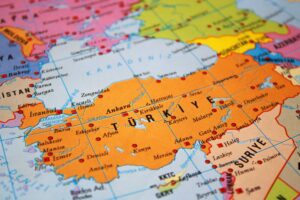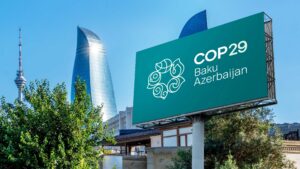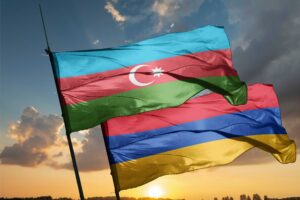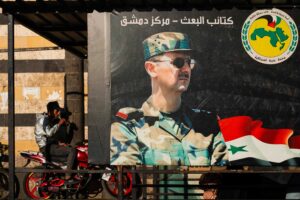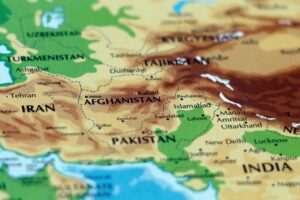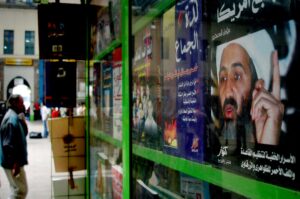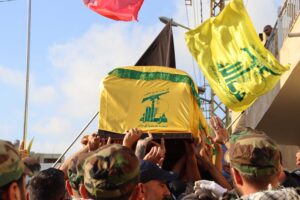On October 29, 2022, the Republic of Turkey celebrated its 99th anniversary. To mark the day, Turkish President Recep Tayyip Erdoğan visited Anitkabir, the mausoleum in Ankara where the founder of the Republic, Mustafa Kemal Atatürk, is buried. Speaking at the site, Erdoğan proclaimed that during the two decades in which his Justice and Development Party (AKP) has been in power, it has “removed the thick walls that have been built between the people and the republic.”[i]
Sofos seeks to understand the role of populism in the politics of the Republic of Turkey.
The uneasy relationship between ‘the people’ and the Turkish state since the proclamation of the Republic by the Turkish Grand National Assembly in October 1923 is the topic of a recently published work Turkish Politics and ‘The People’: Mass Mobilisation and Populism. The author, political scientist Spyros Sofos, is a Visiting Senior Fellow at the London School of Economics Middle East Centre. In this book, Sofos seeks to understand the role of populism in the politics of the Republic of Turkey. Sofos’ research relies principally upon secondary sources, but it also discusses numerous public speeches given by Turkey’s political elites. Although the book pays special attention to the first two decades of the Republic’s history, it covers developments up to the present day.
Considering that ‘populism’ is a highly contested concept within political science, it is worth outlining Sofos’ understanding of the term. Sofos approaches populism as a “political logic” that posits ‘the people’ “as the sole bearer of rights, at the expense of particularistic or individual rights.”[ii] Consequently, populism is characterised by “its inherent aversion to the recognition or assertion of social diversity.”[iii]
The new Republic established by Mustafa Kemal Atatürk was undoubtedly populist. In its official discourse, the Republic contrasted the Ottoman period, in which the Istanbul elites had decided the fate of a powerless population, with a new republican era that had moved ‘the people’ to the centre of Turkish politics. In their quest to define who ‘the people’ were, the new Republic’s elites soon proved that their nationalist project was intent on erasing difference.
Anatolian Christians—whose numbers had significantly decreased after the 1923 Treaty of Lausanne established massive population exchanges between Turkey and Greece—were presented as ‘the Other.’ The Kurds would play a similar role, as was already visible in 1925 when the Islamist Sheikh Said rebellion in Turkish Kurdistan was brutally suppressed. Until the 1990s, “the official position of the Turkish state was to negate the existence of a separate Kurdish ethnicity in Turkey.”[iv]
Turkey’s authoritarian modernisation project found clear echoes in the policies of its eastern neighbour Iran.
Although there were two short and ill-fated attempts at creating a second political party, the Republican People’s Party (CHP) dominated Turkey’s politics during Mustafa Kemal’s lifetime. Despite the inclusion of the word ‘people’ in the name of the party, the CHP’s understanding of politics was highly elitist. As Sofos explains, “the republican elite acted without consideration of popular concerns and opinions, as it considered that it, not the people themselves, had the right to decide.”[v]
The Anatolian peasant, who constituted the basis of the new Turkish society, was seen as having a commendable authenticity but was simultaneously considered to be too influenced by “backward Islam, tribalism, ignorance and a lack of willingness to embrace modernity.”[vi] Accordingly, the paternalism of the state—embodied in Atatürk, or ‘father of the Turk’—was required so that the average Turk could escape backwardness and become a model citizen through the influence of education, secularism, and Westernism. Turkey’s authoritarian modernisation project found clear echoes in the policies of its eastern neighbour Iran, which simultaneously took a similar course under the rule of Reza Shah.[vii]
The passing of Atatürk in 1938 was a momentous event for the young republic. So central was the figure of the Turkish leader that “loyalty to the ideals of the revolution thus became synonymous with loyalty to an idealized memory of Atatürk,” as his biographer Andrew Mango notes.[viii] The founder of the Republic was succeeded by İsmet İnönü as President of Turkey. İnönü had been Mustafa Kemal’s right-hand man but lacked his predecessor’s charisma. Within the CHP, the new Turkish leader “could not be much more than the leader of an elite faction, albeit a dominant one in the late 1930s and 1940s.”[ix] In the new international context that was established after the end of the Second World War, and subject to intra-party pressures to liberalise Turkish politics, İnönü initiated a democratic opening. In 1946, the Democratic Party (DP) was created and four years later it won the first democratic election.
Adnan Menderes, who—like many other DP leaders—had previously been a member of CHP, became the new Prime Minister of Turkey in 1950. Menderes managed to attract religious, conservative, and rural sectors of the Turkish population that had felt marginalised by the narrow definition of Turkishness imposed by the Republic’s elites. In fact, the Democratic Party had “a widespread following in the peasantry and lower urban groups.”[x] It was the DP’s appeal to these societal groups, together with a severe economic crisis, that motivated the Turkish army to carry out a coup against Menderes’ government in 1960.
Erdoğan’s AKP has not shied away from populism, but its populist practices are different.
The 1960 coup inaugurated an unfortunate tradition that would see the army, described as “the incarnation of the soul of Atatürk,”[xi] intervene in national politics when it deemed it necessary. It would do so in 1971, and again in 1980. As Sofos explains, those who disrupted the system of party competition saw ‘the people’ as “naïve, susceptible to the demagoguery of unscrupulous politicians, prone to reverting to values and lifestyles that the Republic had strived to eradicate.” Every intervention “attempted to ‘reset’ the political process after introducing a number of ‘corrective’ measures.”[xii]
The last successful military coup in Turkey took place in 1997, when a coalition government led by the Islamic Welfare Party was forced to step down. One of the former members of this Islamist party, Recep Tayyip Erdoğan, has been the dominant figure in Turkish politics during the last two decades. Sofos argues that Erdoğan’s AKP has not shied away from populism, but its populist practices are different, and in some cases antithetic, from those of the traditional Republican elites and the army.
In 2007, the so-called ‘e-memorandum’ was published on the website of the General Staff of the Turkish Armed Forces with the intention of preventing the election of AKP member Abdullah Gül as President of Turkey. The AKP government “used the polarization of the political field orchestrated by the leadership of the armed forces to its own advantage” and denounced the army for wanting to silence the emerging majority represented by the AKP.[xiii] However, it was the quick succession of electoral victories that emboldened the AKP in its growing majoritarianism. Many have defined the Turkish government’s response to the 2013 Gezi protests in Istanbul as a watershed moment for Turkish democracy.
[This book] is successful in its effort to illuminate the history of Republican Turkey through the lens of populism.
Soon after the start of the protests, the AKP organised political rallies in Ankara and Istanbul that, as Sofos explains, sought “to demonstrate that it was their constituency and not the protesters that represented ‘the people’ and expressed the National Will.”[xiv] Erdoğan accused foreigners and speculators of being behind the protests and announced that “No matter who you are, we will choke you.”[xv] Until the present day, Erdoğan has continued to accuse those who took to the streets in 2013 as guilty of betrayal and even responsible for Turkey’s current economic problems.[xvi]
Turkish Politics and ‘The People’: Mass Mobilisation and Populism is successful in its effort to illuminate the history of Republican Turkey through the lens of populism, an element that has decisively impacted the life of the Republic. The reader may find that the book devotes excessive attention to the 1920s and 1930s to the detriment of more recent times. It is also true, however, that these were the formative decades of Republican Turkey and its relationship with populism.
In 2023, Turkey will hold parliamentary and presidential elections. Currently, the political debate is dominated by Turkey’s economic crisis and the possibility of the AKP losing power to the opposition parties.[xvii] This notwithstanding, the elections that will take place in 2023 will be a new episode in Turkey’s perennial contest to define ‘the people’ and politically represent them.
[i] “Republic Day Celebrated across Country with Ceremonies”, Hurriyet Daily News, 30 October 2022. https://www.hurriyetdailynews.com/republic-day-celebrated-across-country-with-ceremonies-178077.
[ii] Sofos, Spyros A., Turkish Politics and ‘The People’: Mass Mobilisation and Populism (Edinburgh: Edinburgh University Press, 2022), p. 19.
[iii] Ibid., p. 21.
[iv] Neophytos G. Loizides, “State Ideology and the Kurds in Turkey”, Middle Eastern Studies 46, no. 4 (2010): 518.
[v] Sofos, p. 127.
[vi] Ibid., p. 103.
[vii] Hakki Tas, “Review – Touraj Atabaki and Erik J. Zürcher (Eds.), Men of Order: Authoritarian Modernization under Atatürk and Reza Shah,” Millennium 34, no. 2 (2004): 636–37.
[viii] Andrew Mango, Atatürk (London: John Murray, 1999), p. 527.
[ix] Sofos, p. 160.
[x] Kemal H. Karpat, Elites and Religion: From Ottoman Empire to Turkish Republic, 3rd ed. (Istanbul: Timas Publishing, 2012), p. 61.
[xi] Ahmet Kemal, “Military Rule and the Future of Democracy in Turkey,” Middle East Report Information Project (MERIP) 122 (April 1984): 14.
[xii] Sofos, p. 172.
[xiii] Ibid., p. 192.
[xiv] Ibid., p. 200.
[xv] Tim Arango, Şebnem Arsu, and Ceylan Yeginsu, “Turkish Police and Protesters Clash in Square”, The New York Times, 6 November 2013. https://www.nytimes.com/2013/06/12/world/europe/disputed-square-in-istanbul-turkey.html.
[xvi] Andrew Wilks, “Turkey’s Erdoğan Pins Economic Crisis on 2013 Gezi Protests,” Al-Monitor, 7 June 2022. https://www.al-monitor.com/originals/2022/06/turkeys-Erdoğan-pins-economic-crisis-2013-gezi-protests#ixzz7ViKjaSyh.
[xvii] Laura Pitel, “Defeating Erdoğan: Turkey’s Opposition Searches for a Champion”, Financial Times, 5 May 2022, https://www.ft.com/content/710bff84-db73-4785-8386-0bf34e3b8da8.





